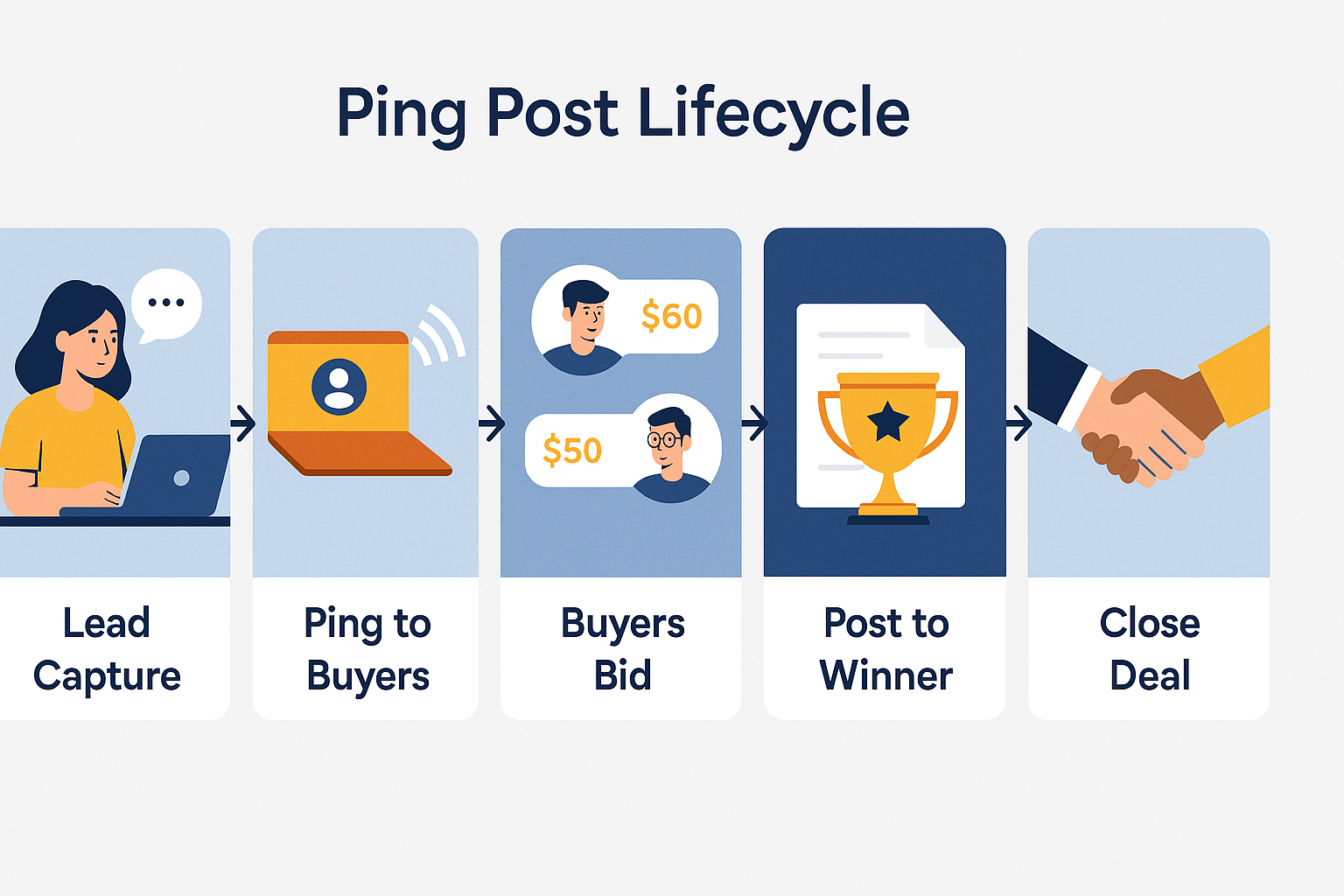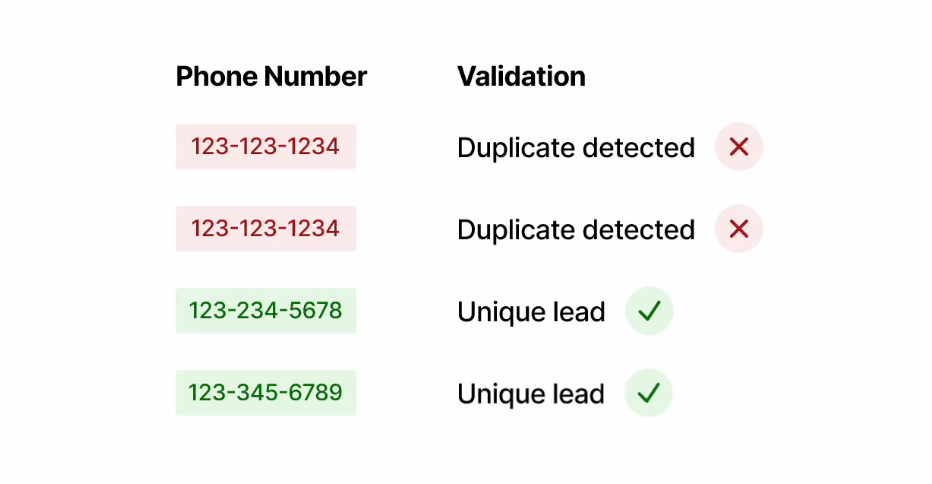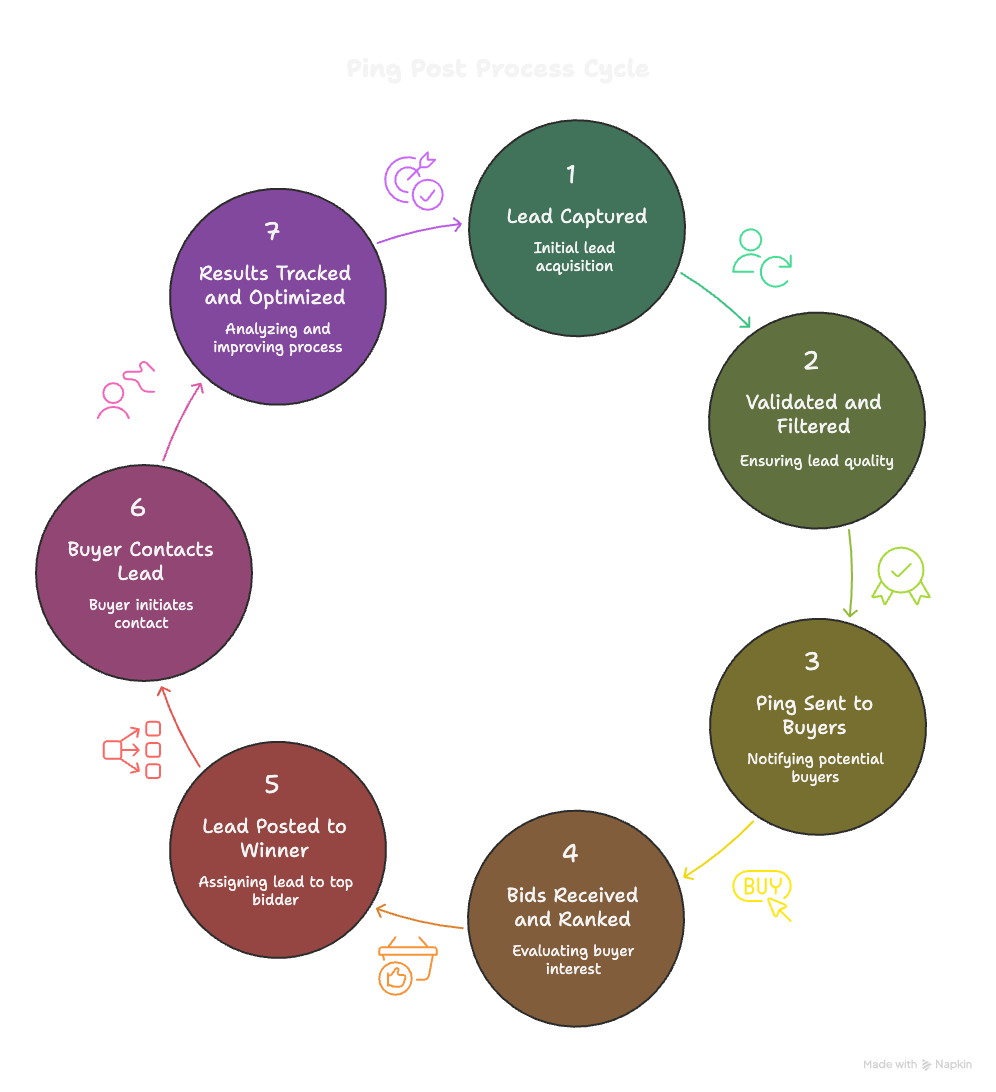So, you've heard ping post is quicker, smarter, and makes more money for sending leads around – and you're right.
But what really goes on between getting a lead and closing the deal?
It's way more than just ping and post. There's a whole process happening behind the scenes. Once you get how it works, you can start making each step better to get more profit, waste less, and get more people to buy.
Let's go through the whole ping post thing, step by step.

🛠️ Step 1: Get the Lead
This is where it all kicks off. You grab a lead from:
- A paid ad thing
- A landing page or quiz thing
- A form on your site
- Someone else sending you leads
This is when they're most interested – and being fast is super important. You want to check out that lead and send it where it needs to go super fast, or they lose interest.
Some tips:
- Keep forms short (don't ask a million questions at once)
- Get their location, what they want, and how to reach them fast
- Put a timestamp on the lead to keep track
🔍 Step 2: Check and Clean the Lead Before Sending
Before you ping anyone, you gotta clean things up:
- See if it's a duplicate
- Make sure the phone/email is real (maybe get more info or rate them)
- Check if they're cool with being contacted (DNC, TCPA, etc.)
- See if they're on any block lists
Why? Because bad leads mess up your relationship with buyers and kill your sales. No one wants to pay for a fake lead or someone who filled out a form ages ago.
Your ping post thing usually handles this – some things, like Standard Information, do this automatically before even pinging.
📡 Step 3: Ping Time (Show a Sneak Peek of the Lead)
This is where the fun starts. You send a ping to your buyers – but just a little bit of info:
* ZIP code
* What they're interested in buying
* Age or credit score
* Where the lead came from or when it was gotten
No personal info yet.
Buyers see this and decide if they want to make an offer – or pass. It's like a super quick silent auction.

💰 Step 4: Offers and Sending to the Right Place
Now that buyers have been pinged, the system:
- Waits for offers
- Looks at them (highest price, best fit, who's most important)
- Uses your rules for who gets the lead (backups, etc.)
- Picks the winner (or does a round-robin if offers are the same)
The best systems do this super fast – any slower and buyers might miss the lead or people lose interest.
Use smart sending (like AmeliaAI in Standard Information) to change buyer rules based on how they're doing.
📬 Step 5: Post Time (Send the Lead)
Once an offer is accepted, the lead is sent.
That means:
- The full lead info goes to the winning buyer
- Maybe it also goes to a CRM, call center, or something else
- The system keeps track of everything
From the buyer's side, they just got a good lead right away. From your side, you just made the most money you could from that lead.
📞 Step 6: Buyer Contacts and Converts
This isn't on your platform – but it's just as important. The buyer's team calls, texts, or emails the lead. The quicker they do this, the better.
Leads contacted in 1 minute are way more likely to buy than those contacted after 5 minutes. Timing is key.

📊 Step 7: Get Feedback, Watch, and Improve
This is where things come full circle. Your platform should:
- Track if the lead was accepted or not
- Record why buyers didn't want the lead (bad phone, no answer, etc.)
- Show stats on how much money you make per lead, response time, fill rate
- Help you get better based on facts – not guesses
The best platforms give you live reports and ways to change things fast. That way, you're not just getting and selling leads – you're making a system that gets better over time.
🎯 The Quick View
Here's the quick version of the whole ping post thing:
* Lead gotten
* Checked and cleaned
* Ping sent to buyers
* Offers gotten and ranked
* Lead sent to winner
* Buyer contacts lead
* Results watched and improved
Easy? Yep. But strong if done right.

🧠 Why This Matters
Getting how the whole thing works helps you:
* See where leads are dropping off
* Get more profit from each step
* Talk better with buyers
* Pick platforms that work for you
* Make things better for leads and clients
It's not just about selling a lead — it's about building a repeatable, high-performance pipeline.
🧩 How Standard Information Helps
We built Standard Information to help with this whole thing from start to finish:
- Super quick ping-post sending
- Built-in cleaning and checking
- AmeliaAI for setting up campaigns easily
- Sending based on appointments
- Live dashboards with ways to get better
Basically, it does the hard work – so you can focus on getting better, not fixing things.
FAQs
Q: What happens after a lead is pinged? Buyers receive partial data, evaluate it, and respond with a bid. If they win, the full lead is posted to them instantly.
Q: What’s the difference between ping and post? “Ping” is a preview to buyers with limited info. “Post” is the full delivery of the lead to the selected buyer.
Q: How do I optimize each part of the lifecycle? Use real-time reporting, test ping logic, validate lead data, and adjust buyer rules regularly.